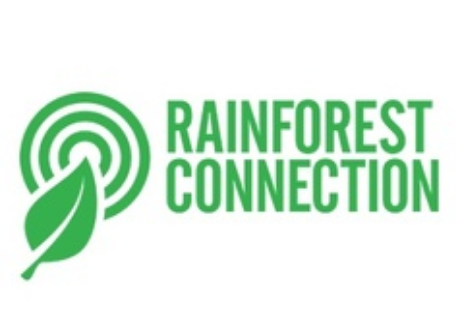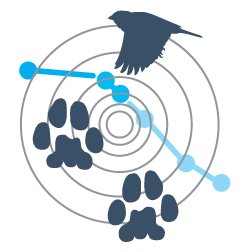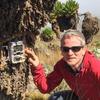Fixing Up Important Scientific Field Site in Panama
27 November 2020 4:32pm
Call for interest in the digital future of Scottish fishing
26 November 2020 9:21am
$10k Challenge Grant for Conservation Tech Projects
 Experiment
Experiment
26 November 2020 12:00am
Learning Resources: Exploring Species Interactions with Snapshot Serengeti
 Meredith S. Palmer
Meredith S. Palmer
25 November 2020 12:00am
Module 2: Setting up the Arduino IDE
 Akiba
Akiba
24 November 2020 12:00am
How do I use open access remote sensing data to monitor fishing?
24 November 2020 12:00am
Kaggle Competition: Species Audio Detection
 Rainforest Connection
Rainforest Connection
24 November 2020 12:00am
WILDLABS Tech Tutors: Season Two
24 November 2020 12:00am
Students looking to speak with local stakeholders
20 November 2020 5:22am
Turtle Monitoring DB
24 January 2020 5:13am
3 June 2020 3:45pm
Hi Ted,
WildTrack is working with the Epicollect5 app that makes it easy to collect turtle images and record a row of data for each one. It's also great for citizen scientists to use. We're using it to monitor Box Turtles and using a morphometric approach to identify individuals.
Hope this helps,
~Zoe
13 November 2020 8:03am
Hi @[email protected]
Not sure what kind of data you (or the partner organization) are interested in collectig/logging.
SWOT just did a short article on the last issue magazine of the apps available for turtle monitoring
https://static1.squarespace.com/static/5b80290bee1759a50e3a86b3/t/5e595027e3b0144b63f281a4/1582911527409/SWOT15_38-39_Smart+Apps.pdf
The just-launched "Sea Turtle Rescue Alliance" has partnered with ProVET to provide a dedicated platform (App and desktop) to record all turtle related data from the arrival at the rescue center to the release, from biometrics to the daily husbandry and medical data.
The ProVet platform will be distributed globally as part of the Alliance work to enhance marine turtle medicine and will be supported by a dedicated Microsoft Team learning and data-sharing platform for the Alliance members. The first 3 Rescue Centers have just started the trial and data migration phase and will be available to other stranding or rescue centers on tiers (as will need some support ) across 2021-22. Membership to the Alliance will be regulated but should be free, depending on the data volume, size of the centers and the specific features requested from ProVET.
The website should be up and running before Christmas.
https://www.facebook.com/seaturtlerescuealliance
Happy to provide more info as the platform becomes available.
21 November 2020 7:06pm
Hi @[email protected] and all,
Please check out https://iot.wildbook.org
Cloud-based data management and computer vision for photo ID using the WIldbook platform. We would love to support additional groups and species.
Thanks,
Jason
Office Hours: Module 1
20 November 2020 12:21pm
20 November 2020 2:34pm
Hi everyone.
For this week's office hours, we'll be giving a preview of Module 2 which will be released after office hours and answering questions about Module 1. We'll also be answering any other questions you might have regarding hardware, sensors, datalogging, etc. Looking forward to chatting on Tuesday.
Also we'll be discussing with @carlybatist to arrange that Jacinta and I will be available for the western hemisphere (Americas and Africa) meetup as well. We didn't expect so much geographically diverse interest in the course. Ha ha ha.
Akiba
Conservation Technology User Guidelines Issue 5: Drones
 World Wildlife Fund
World Wildlife Fund
18 November 2020 12:00am
Introducing the Arctic Animal Movement Archive
 Movebank
Movebank
17 November 2020 12:00am
WILDLABS: Building a Better World with ‘Bad’ Data
17 November 2020 12:00am
Weekly Event: OTN Virtual Study Hall
 Ocean Tracking Network
Ocean Tracking Network
16 November 2020 12:00am
International Certificate Program in Environmental Data Analytics
 Environmental Data Analytics
Environmental Data Analytics
16 November 2020 12:00am
Google unveils search engine for open data
6 September 2018 4:26pm
10 September 2018 7:57am
I agree – this is a very welcome development, and it’s early days; I’m sure it will improve rapidly though. Whilst recognising that there are lots(!) of excellent data repositories out there already, with necessarily specialist functionality, there’s long been a need for something that can overarch these effectively, a ‘discovery portal of discovery portals’. Hopefully this can help do that.
After a cursory look, a couple of things struck me, from a user perspective: 1 –definitely some odd/limited search results at the moment, but as noted it’s early days – it’ll snowball as data owners get on board and standards adjust accordingly. 2 – more search tools would be beneficial e.g. date range tools, a map/bounding box search tool (cf Microsoft’s FetchClimate tool).
I also wanted to understand a bit more behind how it’s working – I assumed markup but wondered what ‘semantic web’ stuff this is drawing on. This article gives a bit more info, but I wonder how different it is to other efforts in this regard, e.g. how ARIES team have been developing semantic based tools to find best available datasets for ecosystem service modelling.
Final thought – it raises interesting questions and challenges about how to ensure things like quality and suitability are going to be measured objectively. It seems like this is an issue to be tackled as the tool develops and data owners engage more as it grows…
20 May 2020 10:24am
Hi all,
I'm fairly new to conservation technology and just getting acquainted with the extent and problems in the field. Data aggregation, standardisation and storage keep popping up as chronic problems across a lot of areas. Data seems to exist in sort of silos with different filing and access arrangements between them.
I would be interested to hear: Has the google dataset search improved drastically since its inception? Are there alternative solutions out there, or are there efforts to create them?
For example, from the bioacoustics meetup the other day, the vast datasets from the Australian Acoustic Observatory and Cornell Bioacoustics Centre don't seem to show up on google dataset search.
Andy the ARIES team you mentioned released a preview video of the interface with their ecosystem services modelling software. It seems really cool, is this something that would be useful for researchers outside of strict ecosystem services e.g. distributions of particular species temporally and spatially? What do you think of their software?
I'm not certain I'm asking the right questions here, but I'd be curious to hear your thoughts on any of this if you have any time.
15 November 2020 1:04am
This is great, thanks for sharing.
2nd Anniversary of the Coalition to End Wildlife Trafficking Online
23 March 2020 6:17pm
14 November 2020 1:19am
Thanks for sharing
Water intermittency data logger
10 December 2018 4:23pm
18 January 2019 7:21pm
Hello Erick
A few comments that you may find useful.
Before I start, I am not a complete Arduino beginner but I am certainly no expert either.
I quote British suppliers' websites below but you should find some local to you that offer the same components. If in doubt you can always try Mouser or Digikey (though mind the delivery charges for low value orders).
ARDUINO
1. SIZE - If you want to keep things small and do without a lot of the connectors etc. that come with the "standard" Arduino UNO then have a look at the ARDUINO PRO MINI. A postage stamp size unit with plenty of digital and analogue input/output as well as onboard voltage regulator to give you some flexibility on power supply.
Having said that, you already found out that by default Arduinos are not that energy efficient. But there is help at hand if you don' t mind getting a little more immersed in the electronics. See here for a very useful and detailed tutorial that worked a treat for one of my projects:
http://www.home-automation-community.com/arduino-low-power-how-to-run-atmega328p-for-a-year-on-coin-cell-battery/
2. OPERATING VOLTAGE AND CPU SPEED - There are Arduino Pro Mini versions operating at 3.3 or 5V, 8 or 16 MHz. Unless you need lots of processing power (unlikely from your description), then the 8 MHz version will do perfectly well. Pick the voltage version depending on the peripherals you are going to use. There are usually, but not always, 3.3 and 5V versions. SD card readers, for example, operate at 3.3V and those suited for a 5V Arduino have onboard level shifters to convert voltage levels.
http://www.hobbytronics.co.uk/index.php?route=product/search&keyword=arduino%20pro%20mini
3. SAVING ENERGY - I guess you don't need continuous measurements but just, say, once an hour. In so far, you could use slightly more energy-intensive measurement devices as they (and the Arduino) will only ever run for a few seconds at a time. On that note, you should be able to power all or at least some of the peripherals off output pins of the Arduino. They only supply a few 10mA but this is enough in most cases. Use two outpins per device, one set to LOW (for 0V) and one set to HIGH (for 3.3 or 5 V). Larger devices would have to be switched on and off through a transistor or even relay that is controlled by the Arduino.
REAL TIME CLOCK
Beware of some of the cheaper RTCs. I found to my detriment that, e.g. DS1302, does not keep time well at all to the point of being entirely useless. Better spend a few bob more and get something like the DS3234, which worked fine for me.
http://www.hobbytronics.co.uk/rtc-ds3234?keyword=rtc
MEASURING WATER FLOWS
If at all possible, measure contactless. As soon as you get your sensor anywhere near the actual stream, you are exposing it to all manner of potential trouble including debris getting washed onto it, clogging any mechanical sensor and possible upsetting most other "direct contact" sensors. Having said that, there don't seem to be all that many off-the-shelf options so here are some ideas off the top of my head.
Digikey sells the same sensors previously suggested from Adafruit but they also have a range of other "immersible" sensors that are lot cheaper:
https://www.digikey.com/products/en/sensors-transducers/optical-sensors-photointerrupters-slot-type-transistor-output/548?k=optical%20liquid%20sensor
A waterproof capacitive sensors may be an option but this would have to be helddown or burried on the stream bed:
https://www.ebay.com/itm/DC-5-24V-Contactless-Liquid-Level-Sensor-Switch-Non-Contact-Waterproof-Detector-/122834485435
An entirely different approach but definitely non-contact: use a small camera module and machine vision to detect the change of state between dry and wet. To do the processing of this on an Arduino would likely be a challenge, then again, what you are looking for is quite a simple change in visual appearance that may be possible to detect without too much processing.
POWER SUPPLY
If you are operating in the desert then I expect a small solar panel with battery should provide you all the power you need for such a small unit. I can't give you much more details on something custom-made but if you want to keep things simple then use an off-the-shelf device with a USB-style connector (get the 5V Arduino in this case). Better yet, use something that has something more robust than a USB port. If all else fails, use something like Sugru to beef-up the USB socket and plug against accidental damage and disconnection.
https://sugru.com/
Good luck and do have fun !!
J
21 January 2019 3:21pm
Hi @j.neff! These are great tips. I am floored by the generosity of this community, thank you! My progress on this project has been slightly stalled - but I just received the components to solder together the RTC that @Alasdair recommended. Hopefully I can get back onto that train soon, as summer is rapidly approaching!
Thanks for sending these other components and ideas, I will update this thread as soon as a beta version of this device is complete!
All the best,
Erick
13 November 2020 7:18am
Really interesting chat.
I was looking at this "eTape" to measure inundation on marine turtle nests.
https://www.adafruit.com/product/463
Will give you water presence and level if you are interested in more than just presence-absence.
The water level reading seems to be continue, but I guess it can be logged or powered only at requested intervals.
Good luck
California Condor Conservation - Tech & Resources
18 May 2020 6:44pm
4 September 2020 1:07am
Hi Akiba,
Oh that is amazing, thank you! I'll get in touch with them and let them know! A few of them are members here on WILDLABS already, so I'll see if they've got a wishlist to post for anyone who might like to help out.
12 November 2020 5:55pm
Hi all,
Just wanted to share some info about VWS's virtual chat series, if you're interesting in hearing the latest condor news about wildfire recovery efforts, how the fires impacted their camera systems, tracking, etc., and about the condor chicks who were rescued from the fires.
The next chat is on November 19th at 4 PM PST, and you can register here. They also have an archive of past recorded chats, including a very cool #tech4wildlife one on condor photography!
-Ellie
12 November 2020 7:18pm
Thanks Ellie - I signed up : )
Webinar: Getting Started With SMART
 The SMART Partnership
The SMART Partnership
11 November 2020 12:00am
BIPOC mentors/mentees + Scholarship Opportunity!
16 September 2020 8:31pm
10 November 2020 6:27pm
Hey Wildlabbers,
Wanted to update with another opportunity from the Black Mammalogists Week organizers!
They're working on a BIPOC scholarship with the funds raised during Black Mammalogists Week, and they'd like to hear about how $1500 would impact your research and early career development! Details here:
Hey y'all this is still happening!
— Black Mammalogists (@BlkMammalogists) November 10, 2020
Are you BIPOC? Interested in mammals/wildlife?
How would *$1500* change your research or professional development? DM us for how to contribute a 30-sec vid to our campaign for the BIPOC scholarship endowment. RT!https://t.co/Rx16dyk6mZ
Get To Know FIT!
8 May 2020 6:36pm
29 June 2020 4:04pm
Upper level undergraduates
29 June 2020 8:14pm
Can we take this to email Roland? : [email protected]
Happy to have a video call sometime to discuss how we can help!
Z
10 November 2020 11:20am
Dear Zoe,
I wonder whether FIT would be good for species-level (rather than individual level) identification of small mammals. We use track tunnels to get prints of dormice (3 species) on carbon soot (metal surface covered by soot). We do have bibliographical reference of those species (Glis glis, Dryomys nitedula, Muscardinus avellanarius) and other "usual suspects" (e.g. Apodemus sp.). Fom some of them, we also have some tracks from captive animals (although not as many as you describe you need in the videos, but we could arrange for more in the future...once the dormice wake up again in the Spring). Is this something worth exploring? We can manually do the id for our current project, but I am interested in developing know-how for the future as well (and use the current project to achieve this).
Alternatively - and equally interestingly for us - we could work on individual level identification of animals of a small Dryomys nitedula population that we have within our research institute's ground (and hence we can easily do lots of field tests etc.) - ideally involving an undergraduate student in the process as well (come Spring 2020). Would this be something that we could work on, with some guidance - collaboration for you - with the intent of getting a model out for peopel to use across Europe?
Maybe we could discuss sometime? My email is [email protected]
regards,
Christos
Module 1: Understand the Design Stack
 Akiba
Akiba
10 November 2020 12:00am
Using Computer Vision to Protect Endangered Species
 Kasim Rafiq
Kasim Rafiq
10 November 2020 12:00am
Hackathon Opportunity: Vaquita Hacks
 The Conservation Project International
The Conservation Project International
10 November 2020 12:00am
Seeking reviewers for early-career funding applications
6 November 2020 2:37pm
Funding Opportunity: Wildlife Acoustics Scientific Product Grants
 Wildlife Acoustics
Wildlife Acoustics
6 November 2020 12:00am
Southern Right Whales & Genome and Satellite Technology
 Emma Carroll
Emma Carroll
5 November 2020 12:00am
Tech Tutors: How do I repair my camera traps?
22 July 2020 8:20pm
10 September 2020 4:25pm
Hi all,
I know we mentioned this in the episode and collaborative doc for this episode, but I just wanted to make sure everyone knows about the camera trap troubleshooting spreadsheet our presenters created! The goal is to build up a bank of common problems so we can help each other and have an ongoing resource to use.
Please consider adding your problems into the spreadsheet as well as here in the forum!
-Ellie
6 October 2020 5:55pm
Hi all,
This camera trap repair video about sulfated batteries was shared with us on Twitter and I thought it might be interesting and helpful for this Tech Tutors group! Check it out here and let us know if you find this useful!
-Ellie
3 November 2020 7:03pm
Hi all,
Just saw this on Twitter - a database of all kinds of camera trap user manuals across brands and models. Thought it might be a helpful resource if you're struggling with an old or used camera that you don't have the manual for.
------
Did you buy your #cameratrap years ago and you have lost the user manual?
— cameratraps (@cameratraps1) November 3, 2020
that's my case, but I've the solution!
find here thousand of #cameratrap user manual. Different brands, models...https://t.co/c9FchfINzR




















22 November 2020 5:24pm
Hi,
I have some Malagasy contacts if those might be of interest to the students. I conduct fieldwork on lemurs in a national park there in collaboration with Centre ValBio research station, but I know of others working in Malagasy non-profits as well who may be good candidates. Feel free to email me ([email protected]) and I'm happy to facilitate any connections I can.
All the best,
Carly